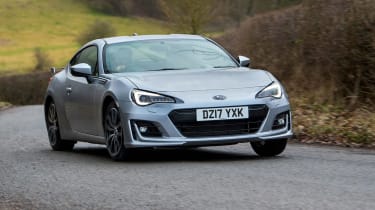Subaru BRZ (2012 - 2021) review – MPG and running costs
Those tyres shouldn’t wear out too quickly, but better sets aren’t too expensive. Fuel costs aren’t bad either, but high tax rates contribute to the expensive on-the-road price
The 2-litre direct-injection flat-four engine in the Subaru doesn’t have the on-paper economy that turbocharged cars offer, with an official WLTP figure of 33.3mpg combined, the auto managing 33.0mpg.
On the plus side, you’re actually likely to get close to that MPG figure in the real world. When we ran a Toyota GT86 (that has the same engine, transmission and weighs the same) as a long-termer a few years back, numbers in the low 30s were a regular occurrence, and the car wasn’t driven gently. More recently, experience with a GT86 suggests even higher numbers in mixed driving.
CO2 (an NEDC correlated figure) is rated at 196g/km, so in purely economic terms you’ll spend a little more on tax than you would with a hot hatchback of equivalent performance. The automatic’s NEDC-equivalent CO2 figure is lower at 183g/km. The former means a hefty first-year VED bill of £1280, contributing to the car’s high on-the-road price. The auto’s VED number falls into a slightly lower bracket at £855, with both cars then attracting the standard £145/year bill thereafter.
We’d be inclined to swap the BRZ’s cheap Michelin Primacy tyres for some more premium, performance-focused rubber as soon as the opportunity presents itself. Given a full set of Michelin Pilot Sport 4 tyres (a previous evo tyre test winner) is £440 before discounts from Blackcircles – less than £20 more than a set of Primacy 4s – it’s a no-brainer.



